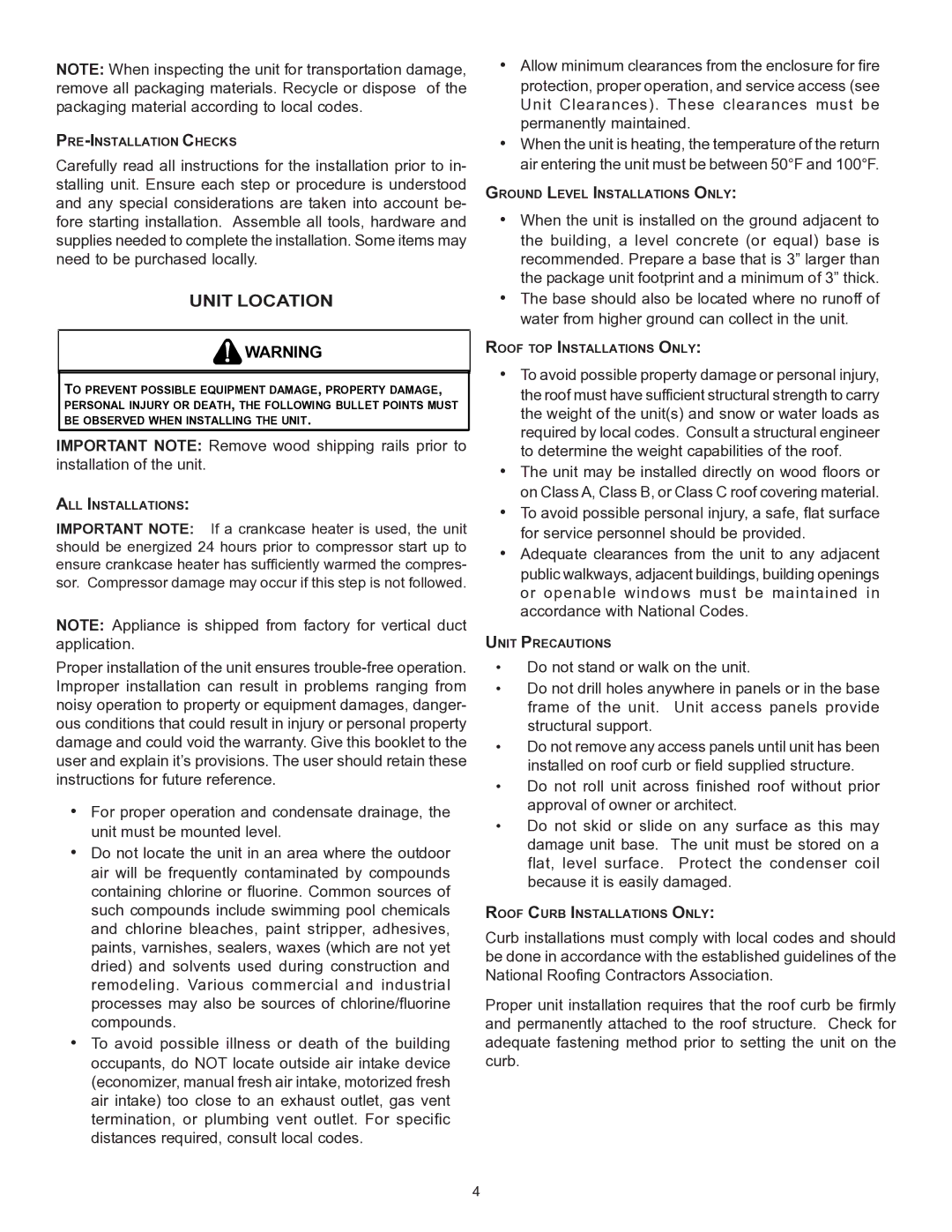CPC/CPH specifications
Goodman Manufacturing, a prominent name in the HVAC industry, offers a range of products designed for efficiency, reliability, and affordability. Among their various offerings, the Goodman CPC (Commercial Packaged Condensing) and CPH (Commercial Packaged Heat Pump) systems stand out due to their advanced features and innovative technologies.The Goodman CPC and CPH units are designed for commercial applications, providing effective heating and cooling solutions for diverse settings such as restaurants, warehouses, and retail spaces. One of the main features of these systems is their high energy efficiency, which allows businesses to save on energy costs while reducing their carbon footprint. These units typically feature SEER (Seasonal Energy Efficiency Ratio) ratings that comply with or exceed industry standards, ensuring optimal performance throughout the year.
Equipped with high-performing scroll compressors, Goodman’s CPC and CPH systems deliver consistent cooling and heating performance, enhancing overall system reliability. The scroll compressor technology is known for its durability and quieter operation, making it an excellent choice for environments where noise reduction is crucial.
Another significant characteristic of Goodman’s systems is their robust construction. Built with commercial-grade materials, the CPC and CPH units are designed for long-term performance, capable of withstanding harsh weather conditions and heavy usage. The all-aluminum microchannel coils used in these units provide excellent heat exchange efficiency and resist corrosion, ensuring a longer lifespan.
Smart technology integration is another highlight of Goodman’s offerings. The CPC and CPH systems can be equipped with advanced controls, including smart thermostats and remote monitoring capabilities, allowing businesses to optimize their HVAC performance. These technologies enable precise temperature control and energy management, leading to increased comfort and cost savings.
Furthermore, Goodman emphasizes ease of installation and maintenance in the design of their CPC/CPH systems. The compact design and simplified access to key components ensure that service technicians can perform maintenance promptly, minimizing downtime in commercial settings.
Ultimately, Goodman Manufacturing’s CPC and CPH systems represent a blend of energy efficiency, advanced technology, and durability, making them an excellent choice for businesses seeking reliable HVAC solutions. With a commitment to quality and customer satisfaction, Goodman continues to be a leader in the HVAC industry, providing products that meet the needs of today’s diverse commercial environments.

